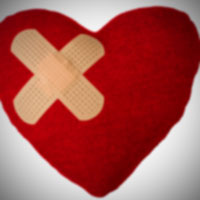Heart Attack Symptoms
The Best Time to Use Your Personal ECG Monitor


Standard US shipping included (We ship internationally daily)
Product Description
A good time to take an ECG is when having heart attack symptoms.

Patients with coronary artery blockages can show little symptoms or have normal electrocardiogram (ECG or EKG) while at rest. In the same token, people with no heart problems can show convincing symptoms and suspicious EKG. The common recommendation is to do a cardiac stress test that measures the patient's blood pressure and ECG while exercising. However there are cases that the stress test does not reveal the artery blockage; furthermore, the stress test is expensive and must be performed in a medical facility.
An alternative is to take ECG while the patient is having the symptoms. By examining the changes in the ECG patterns between those taken with and without the symptoms, it can give more accurate diagnosis. Since the symptoms can occur any time and last only a few minutes, an ECG monitor must be on standby all the time. This is not practical before as EKG monitors was expensive and huge. With the advent of new technologies, affordable personal ECG monitors are available for home use.
The following is a list of heart attack warning signs as advocated by American Heart Association:
- Chest discomfort. The most common symptom is discomfort in the middle of the chest that lasts for several minutes or more. The discomfort may goes way and comes back. The discomfort may feel like pressure, squeezing, fullness or pain.
- Upper body discomfort. Other areas, such as back, neck, jaw, stomach, upper abdomen and one or both arms, may also affected. The discomfort may be mild to intense. It may feel like pressure, tightness, burning, or heavy weight.
- Shortness of breath. This can occur with or without discomfort.
- Cold sweat, nausea, fainting, general fatigue, paleness and/or lightheartedness
- Bluish discoloration of the skin
- Increased or irregular heart rate
Not all of these symptoms occur in every attack. Sometimes they go away and return. If some occur, get help and act fast. The quickest way to obtain help is to call 911 and ask for an ambulance. The paramedics can provide immediate help and also a patient would get more timely attention if he arrives in an ambulance.
For more information related to heart attack, see Heart Attacks and Act in Time to Hearet Attack Signs in NIH website.
A good time to take an ECG is when having heart attack symptoms.

Patients with coronary artery blockages can show little symptoms or have normal electrocardiogram (ECG or EKG) while at rest. In the same token, people with no heart problems can show convincing symptoms and suspicious EKG. The common recommendation is to do a cardiac stress test that measures the patient's blood pressure and ECG while exercising. However there are cases that the stress test does not reveal the artery blockage; furthermore, the stress test is expensive and must be performed in a medical facility.
An alternative is to take ECG while the patient is having the symptoms. By examining the changes in the ECG patterns between those taken with and without the symptoms, it can give more accurate diagnosis. Since the symptoms can occur any time and last only a few minutes, an ECG monitor must be on standby all the time. This is not practical before as EKG monitors was expensive and huge. With the advent of new technologies, affordable personal ECG monitors are available for home use.
The following is a list of heart attack warning signs as advocated by American Heart Association:
- Chest discomfort. The most common symptom is discomfort in the middle of the chest that lasts for several minutes or more. The discomfort may goes way and comes back. The discomfort may feel like pressure, squeezing, fullness or pain.
- Upper body discomfort. Other areas, such as back, neck, jaw, stomach, upper abdomen and one or both arms, may also affected. The discomfort may be mild to intense. It may feel like pressure, tightness, burning, or heavy weight.
- Shortness of breath. This can occur with or without discomfort.
- Cold sweat, nausea, fainting, general fatigue, paleness and/or lightheartedness
- Bluish discoloration of the skin
- Increased or irregular heart rate
Not all of these symptoms occur in every attack. Sometimes they go away and return. If some occur, get help and act fast. The quickest way to obtain help is to call 911 and ask for an ambulance. The paramedics can provide immediate help and also a patient would get more timely attention if he arrives in an ambulance.
For more information related to heart attack, see Heart Attacks and Act in Time to Hearet Attack Signs in NIH website.
Shipping Information
Shipping Weight: 0.00 Pounds
Availability: In stock! Ready to ship.
Shipping Cost: US Shipping included! Int'l Shipping calculated at checkout
In-stock items are normally shipped within 24-48 hours on business days. For special handling or overnight shipping, please call us at 281-664-1209.
Manufacturer Information
Manufacturer:
Item Code:
Product belongs to these categories...
Home ECG / EKG Monitor

